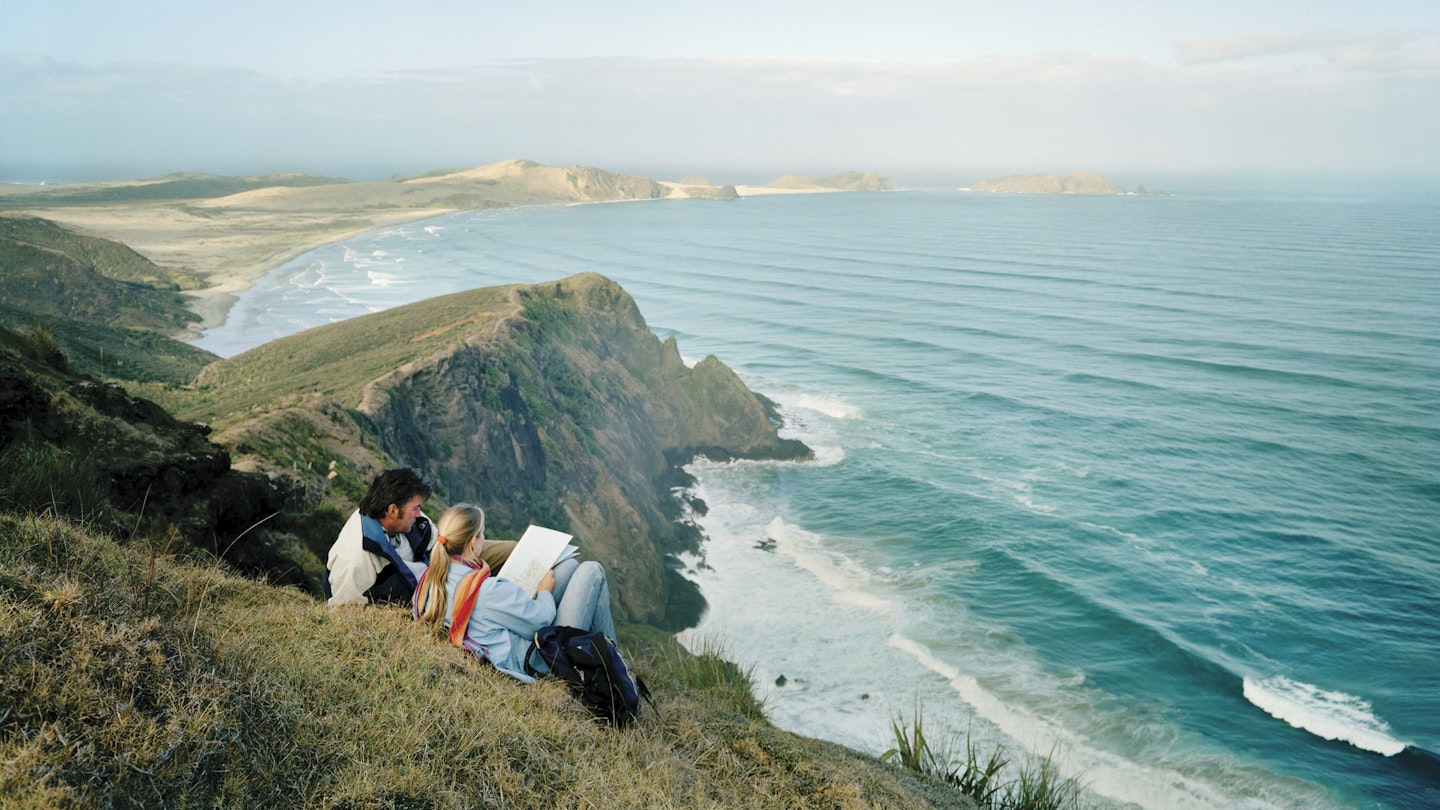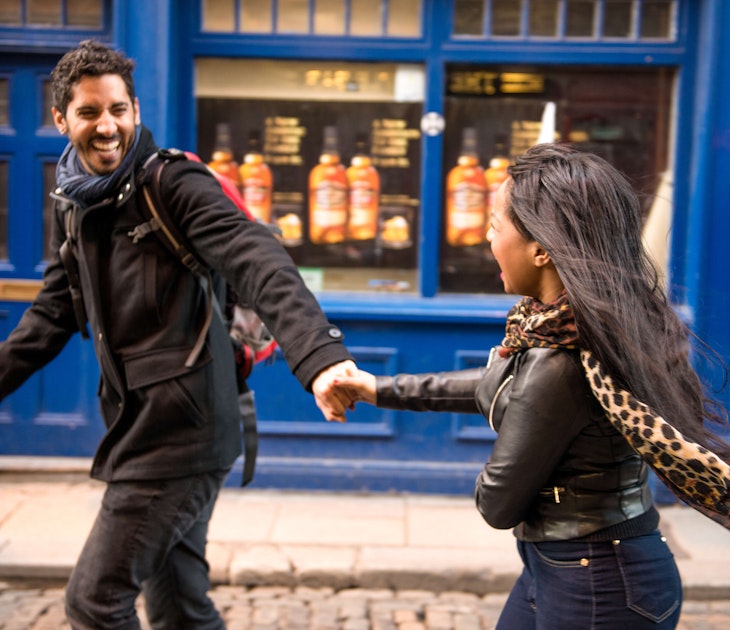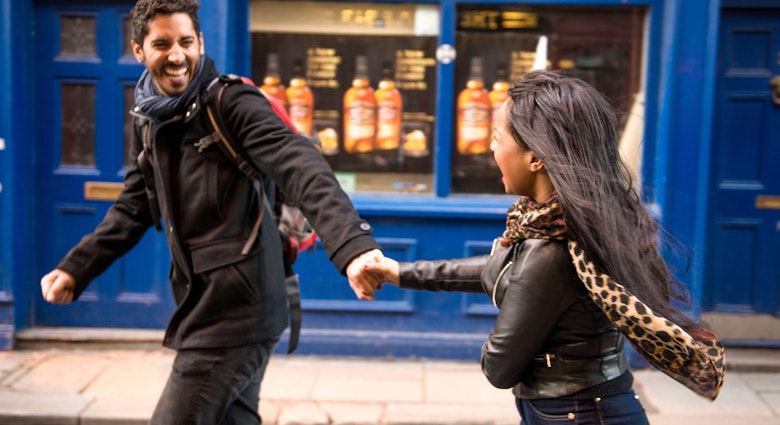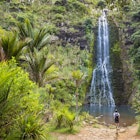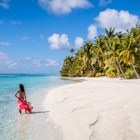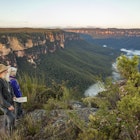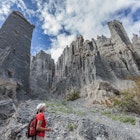Journeying to New Zealand and exploring Aotearoa is a good choice any time of the year – but your experience will vary depending on what season you choose to visit.
During summer, you can enjoy a southern hemisphere adventure by hiking New Zealand's Great Walks and partying at the year's best music festivals, while the more affordable months of autumn lend themselves to RV vacations. Winter is the time to combine snow sports with urban experiences, while spring marks the arrival of flavor-packed festivals showcasing local beer, wine and seafood.
Here's our guide to the best time to visit New Zealand.
December to February is the best time for outdoor activities and festivals
Summer in New Zealand means busy beaches, (usually) good weather for hiking (known locally as "tramping") and leisurely cricket matches. On the festival front, highlights include Gisborne’s Rhythm & Vines and Wanaka’s Rhythm & Alps, two DJ and dance music multi-day events. In February, Napier is enlivened with a celebration of all things art deco, while Splore attracts Aucklanders for three days of Burning Man-inspired art, music and dance. Eating and drinking exceptionally well is the focus at the Marlborough Wine & Food Festival. Booking ahead for the most popular festivals is vital – both to score event tickets and secure accommodation.
Summer school holidays from mid-December to early February increase accommodation prices for hotels, motels and holiday parks. Try and book ahead, especially across the Christmas and New Year periods, when popular North Island beach resort towns like Tauranga’s Mt Maunganui and Whitianga are packed with Kiwi families and revelers. Waitangi Day, New Zealand’s national day, is celebrated on February 6.
If you’ve seen New Zealand’s wild lupin flowers flooding your social feeds, December to February is the best time to view these colorful blooms around Central Otago and the Mackenzie Country. Note that some areas of the South Island (especially around Lake Tekapo, where they once flourished on the shore) are attempting to eradicate the spread of the invasive species.

March to May means more festivals and good-value road-tripping
Transitioning from late summer to a southern hemisphere autumn (fall), March to May in New Zealand offers cool but pleasant weather, and a warmish ocean that’s still okay for swimming and watersports – especially at North Island beaches around March and April.
With often settled and drier weather in most regions, it’s a great time to explore Aotearoa. Due to fewer Kiwis traveling (the exception being around Easter, when kids are out of school for two weeks) visitors can expect better value accommodation and shorter lines at key attractions. There’s also less traffic for road trips from Auckland to the Bay of Islands and the Coromandel Peninsula, or for motor home journeys on the most popular routes in the South Island.
Popular March festivals include WOMAD NZ (New Plymouth’s annual celebration of global beats and world music) and the quirky Wildfoods Festival. The latter, held in the South Island town of Hokitika, is where you can sample local beer, venison and eel, alongside more challenging dishes such as lamb’s testicles and fried locusts. At Auckland’s Pasifika festival, also in March, vibrant music and dance from Auckland’s Pacific Island communities are paired with food from Samoa, Tonga, Niue and the Cook Islands.

June to August is the best time for city breaks and snow sports
Popular summer destinations such as Golden Bay, the Coromandel Peninsula and the Bay of Islands will be very quiet during the cooler months of June to August. In these areas, many tourist-oriented businesses close down for the winter. It’s also not the best time to embark on many of the country’s Great Walks, with challenging and often dangerous conditions on alpine and sub-alpine tracks in the South Island and Tongariro National Park. It is, however, usually a good time to experience the Abel Tasman Coast Track. Wrap up warmly for cool mornings, but look forward to blue-sky conditions later in the day.
The snow sports season also kicks off at this time of year, especially around Queenstown and Wanaka in the South Island. Booking ahead for accommodation is recommended, particularly during another set of school holidays in July. Note that skiing in New Zealand is increasingly popular for Australian families, so it’s also worth checking when Australian school holidays fall.
In New Zealand’s cities, shorter days and longer nights mean there is a focus on indoor events. Wellington comes alive in August with the craft beer and culinary combination of Beervana and Wellington on a Plate (WOAP), while the historic South Island town of Oamaru is enlivened by the quirky Steampunk festival in June. Highlights of winter in Auckland include Elemental, the city’s annual July and August festival focused on arts and culinary events. Restaurant Month in Auckland is a great opportunity for discounted dining at some of the city’s best eateries.
First inaugurated as a national public holiday in 2022, Matariki is a celebration of the Māori New Year. The actual date varies depending on the lunar calendar, but incorporates a Friday holiday weekend around late June or early July. Matariki events and cultural celebrations are becoming increasingly popular throughout New Zealand.
Winter is also one of the best times to experience New Zealand’s Dark Sky Sanctuaries, thanks to clearer skies and longer nights. Popular destinations for stargazing include Aotea/Great Barrier Island off the coast of Auckland, and the South Island’s Mackenzie Country.

September to November is the best time for hiking and foodie festivals
A spring rain shower is never far away from September to November, so definitely pack a lightweight waterproof jacket. New Zealand’s shoulder season usually offers better accommodation prices, although another two-week burst of school holidays in September can impact demand and pricing for hotels and motels.
The snowsports season largely concludes around early October, meaning October and November can be a good time to visit Queenstown or Wanaka, especially for mountain biking amid still cooler weather. New Zealand’s Great Walks hiking season also kicks off in late October and runs through until April. Bookings to secure trail access and hut accommodation can be made on the Department of Conservation (DOC)’s website, usually from May. It’s essential to book ahead for popular experiences including the Milford, Routeburn and Kepler Tracks.
Spring festivals include Crayfest Kaikōura, pairing everyone’s favorite crustacean (crayfish) with local wine and craft beer. It’s also a good time to incorporate some whale watching at Kaikōura. Toast Martinborough attracts Wellingtonians across the Remutaka Range for a one-day November pinot noir-fuelled celebration of food, wine and music.
